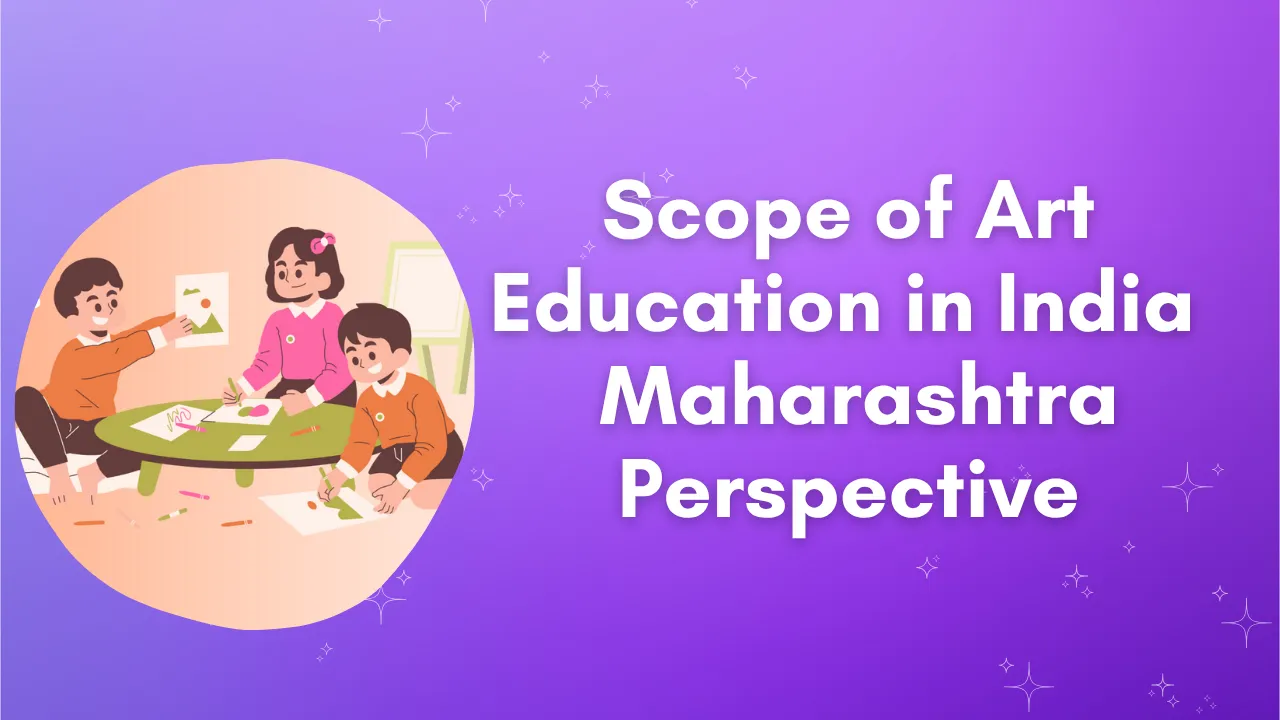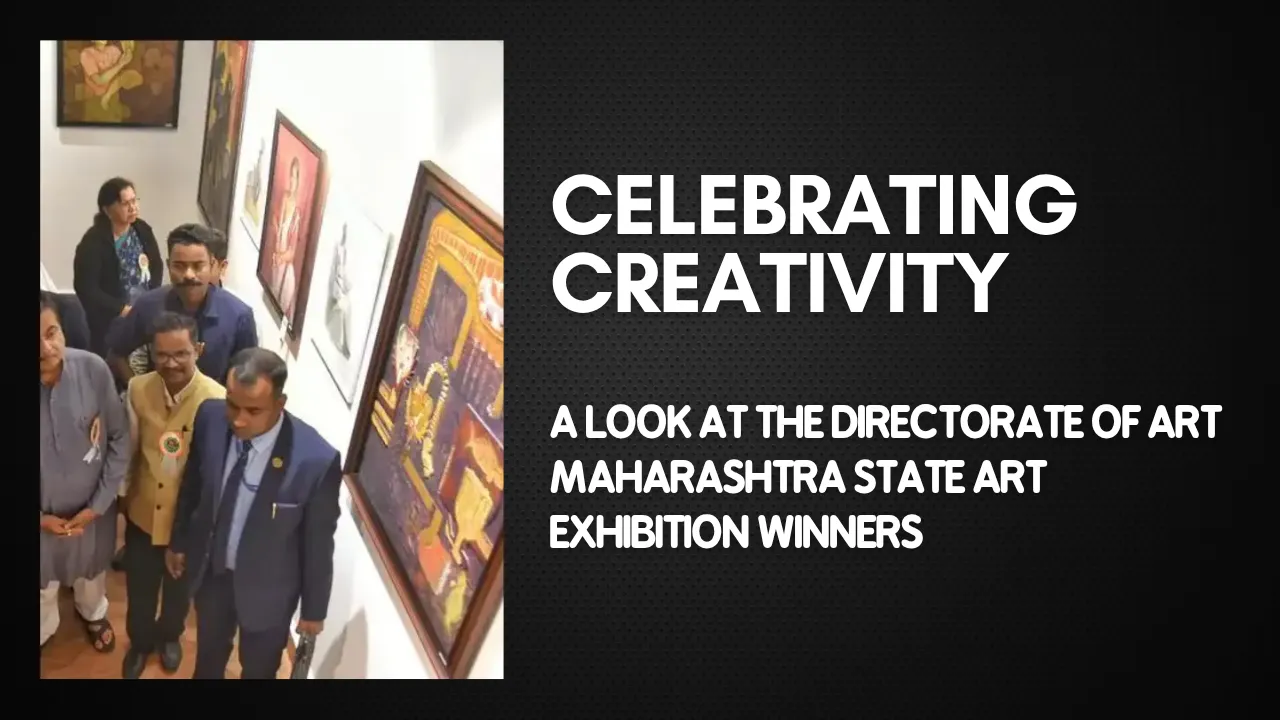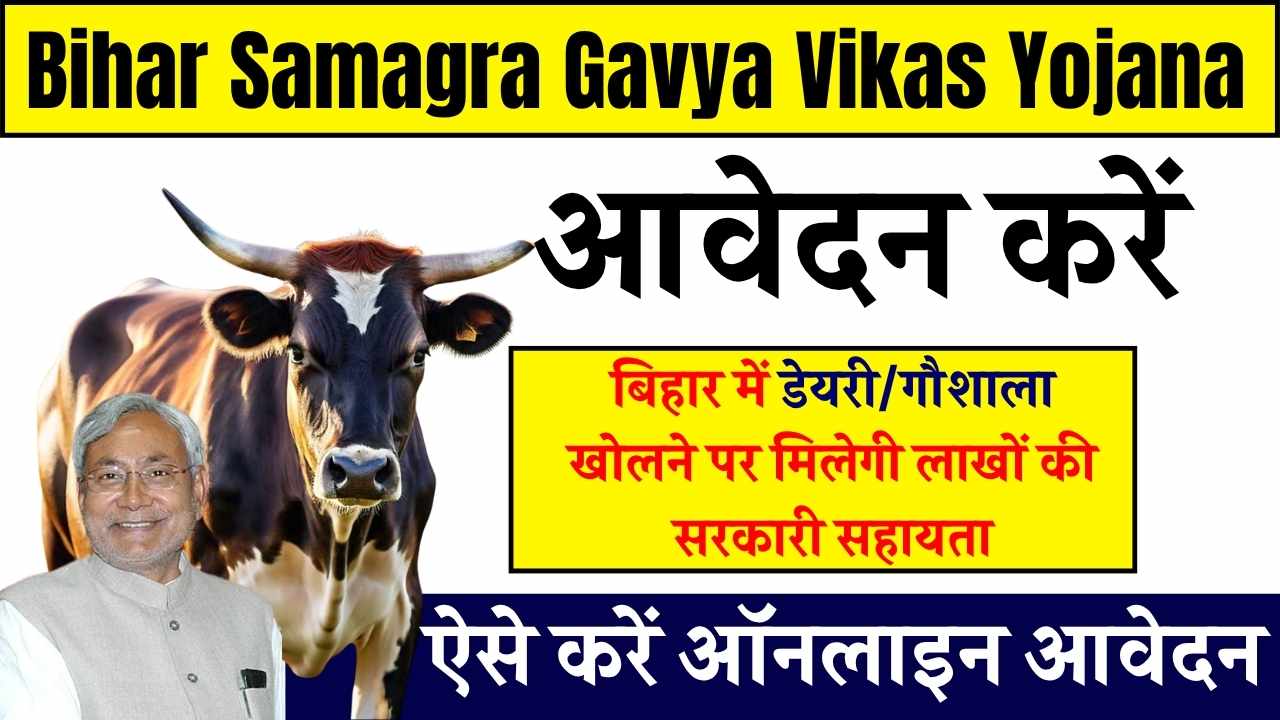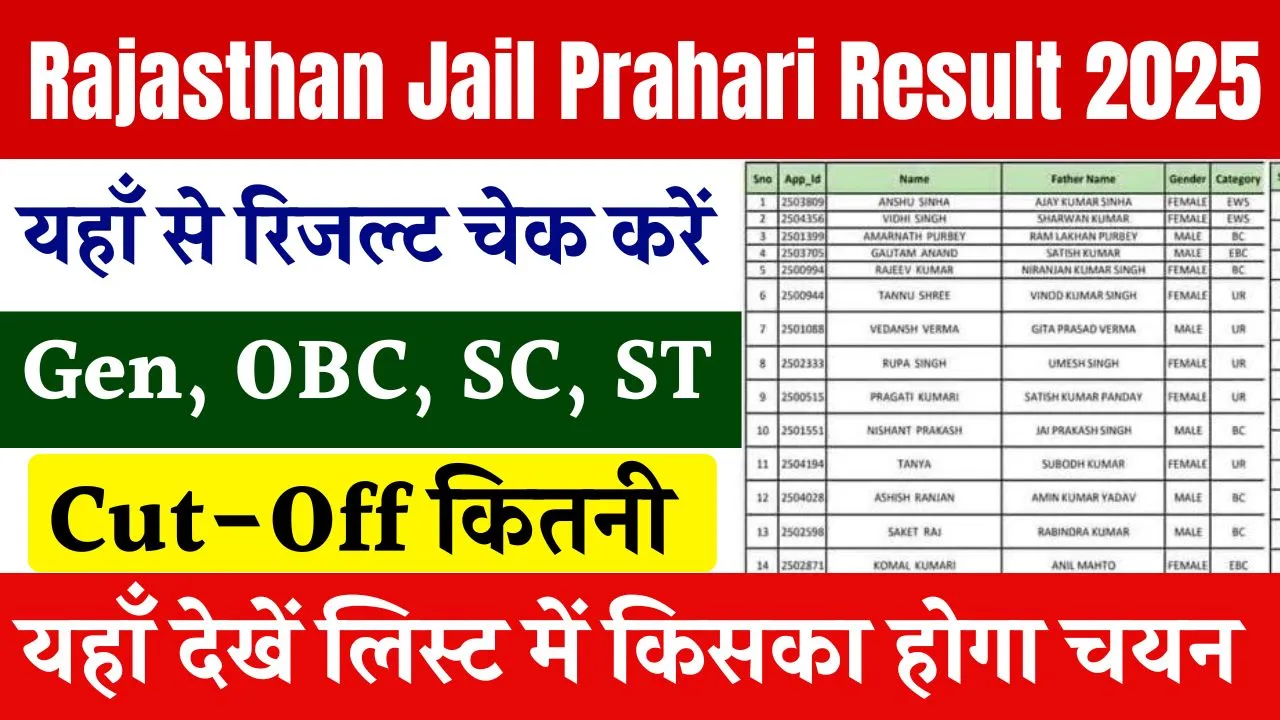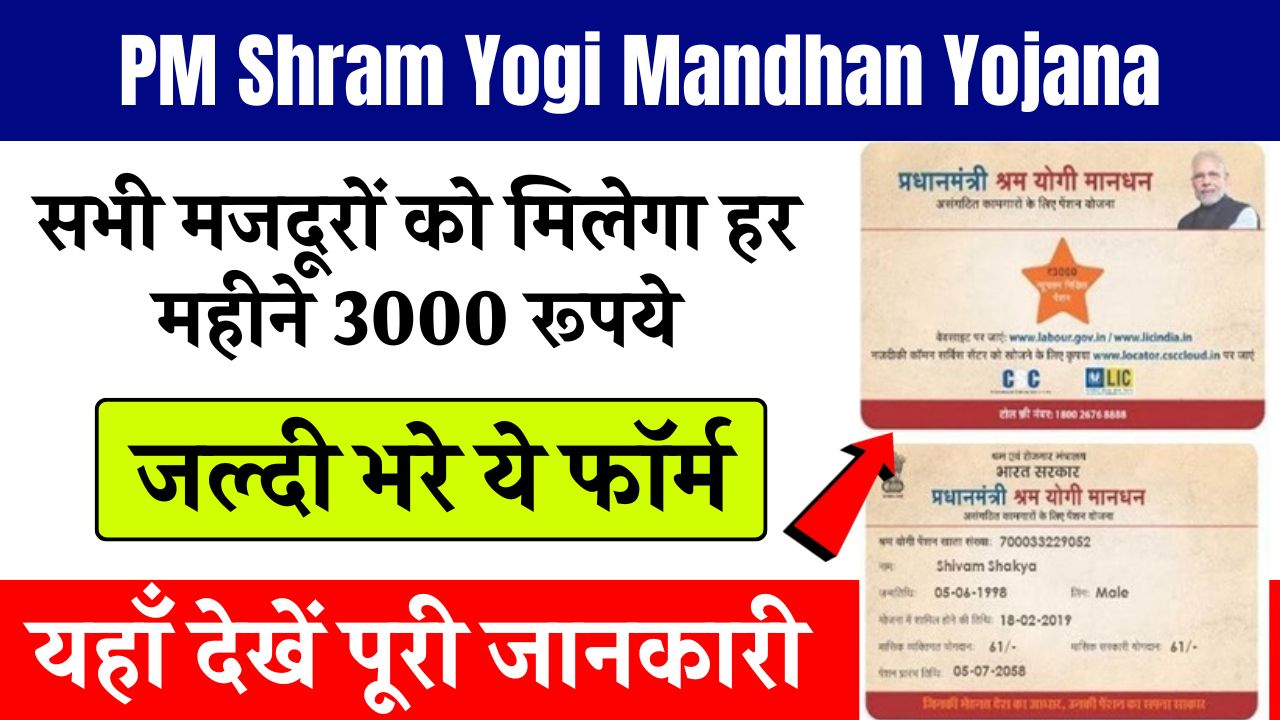Scope of Art Education in India: The scope of art education in India is undergoing a dynamic transformation, especially in states like Maharashtra where culture, creativity, and innovation intersect in unique ways. From traditional folk arts to digital design, art education is gaining renewed importance in academic discourse and career planning. As India’s education system embraces holistic learning, the role of art in shaping young minds is being increasingly recognised.
In the Maharashtra context, the scope of art education in India reveals an exciting blend of heritage and modernity. The state has always been a cultural hub, home to historic art forms, thriving film and theatre industries, and renowned educational institutions. This article explores how art education is evolving in Maharashtra, what opportunities it presents, and how students, educators, and policymakers can benefit from its growth.
Historical Roots and Cultural Significance
Maharashtra has deep artistic roots. From Warli tribal paintings and Paithani textiles to Pune’s classical music and Mumbai’s Bollywood scene, art has always played a central role in the state’s identity. This cultural wealth provides a strong foundation for formal art education.
Institutions like Sir J.J. School of Art in Mumbai, one of the oldest and most respected art schools in India, have shaped generations of artists. These institutions offer courses in fine arts, applied arts, sculpture, and design, encouraging students to explore creativity in structured formats. This legacy strengthens the scope of art education in India, setting Maharashtra apart as a leader in the field.
Current Trends in Art Education
Modern art education in Maharashtra now includes a wide spectrum of disciplines, from graphic design and visual communication to animation, fashion design, and game art. Many private institutions have introduced short-term diploma courses alongside full-time degree programs, making art more accessible to a broader range of students.
Several universities across Maharashtra, including Savitribai Phule Pune University and Mumbai University, now offer integrated courses that combine art with technology and entrepreneurship. This trend reflects a shift toward skill-based education, ensuring that art graduates are industry-ready.
Additionally, Maharashtra’s NEP (National Education Policy) 2020 implementation has further encouraged art integration across curriculums—from school to higher education—paving the way for holistic development.
Career Opportunities in Art
The scope of art education in India, especially in Maharashtra, extends far beyond traditional roles like painting or sculpting. Graduates can now find diverse career paths in sectors such as:
- Advertising and Branding – Visual artists and graphic designers are in high demand.
- Animation and Gaming – Pune and Mumbai are emerging hubs for animation studios.
- Film and Theatre – Opportunities abound in costume design, set design, and production.
- Education and Research – Teaching art at schools, colleges, and conducting independent research.
- Heritage and Museum Management – Working in conservation, curation, and public education.
- Freelance and Entrepreneurship – Many artists are choosing independent careers through exhibitions, digital platforms, or online content creation.
In Maharashtra, cities like Mumbai, Pune, Nagpur, and Aurangabad are witnessing a surge in creative start-ups, design firms, and online art marketplaces, which are actively hiring young talent.
Role of Technology in Art Education
Technology has redefined the way art is taught and practiced in Maharashtra. With the rise of online learning platforms, students can now access world-class courses from global institutions. Schools and colleges are incorporating digital illustration, video editing, and UI/UX design into their curriculums.
AR (Augmented Reality) and VR (Virtual Reality) are also making their way into art classes, especially in higher education and design schools. These advancements not only enhance creativity but also expand the professional scope for students beyond national boundaries.
Challenges in Expanding Art Education
Despite the progress, several challenges persist:
- Lack of Awareness: Many parents and students still view art as a hobby rather than a viable career.
- Funding and Infrastructure: Government schools often lack qualified art teachers and proper resources.
- Urban-Rural Divide: Access to quality art education is mostly concentrated in urban centers like Mumbai and Pune.
- Job Market Uncertainty: Some art graduates struggle to find stable employment, especially if not trained in digital or applied arts.
Addressing these issues will require a joint effort from the government, educators, and private institutions. Initiatives like artist-in-residence programs, community art festivals, and public art grants can bridge gaps and promote inclusivity in art education across the state.
Government and Institutional Support
The Maharashtra State Board of Secondary and Higher Secondary Education (MSBSHSE) has taken steps to include visual and performing arts in school curricula. Several scholarships and fellowships are also offered by the Government of Maharashtra, including:
- Cultural Talent Search Scholarship Scheme (CTSSS)
- Maharashtra State Art Scholarship
- Kala Nidhi Grants
These efforts support both students and educators in promoting and sustaining art education. At the same time, partnerships with industries and NGOs are bringing practical experiences into classrooms.
Community Initiatives and Grassroots Impact
Local art groups and non-profits across Maharashtra are playing a crucial role in nurturing young talent. In rural areas, organisations are teaching folk arts like Warli, Bhil painting, and leather puppetry, while urban collectives focus on modern forms like street art and digital murals.
Art therapy workshops, inclusive art programs for special needs children, and mobile art vans are helping to democratise art education. These community-driven efforts widen the scope of art education in India and showcase Maharashtra as a progressive state in inclusive learning.
Two Key Opportunities in Maharashtra’s Art Education Growth
- Integration with Digital Skills
- Courses that combine art and technology—like animation, digital marketing, and UI/UX—are creating new job markets and making art education more practical.
- Courses that combine art and technology—like animation, digital marketing, and UI/UX—are creating new job markets and making art education more practical.
- Cultural Tourism and Heritage Projects
- With Maharashtra’s rich cultural sites, students can explore careers in art conservation, tourism interpretation, and heritage branding, supported by government projects and NGOs.
- With Maharashtra’s rich cultural sites, students can explore careers in art conservation, tourism interpretation, and heritage branding, supported by government projects and NGOs.
FAQs
1. Is art education only for students pursuing fine arts?
No, it includes applied arts, design, multimedia, and even digital media. It’s open to students from various educational backgrounds.
2. Can art be a full-time career in Maharashtra?
Yes, many artists work in advertising, gaming, education, film, and freelancing. Opportunities are growing with digital expansion.
3. Which are the top art institutions in Maharashtra?
Sir J.J. School of Art (Mumbai), MIT Institute of Design (Pune), and Symbiosis Institute of Design are some renowned names.
4. How is the government supporting art education?
Through scholarships, curriculum changes, cultural grants, and partnerships with creative industries.
5. Are there opportunities for rural students in art education?
Yes, several NGOs and government programs are promoting traditional art forms and offering training in rural Maharashtra.
Final Thoughts
The scope of art education in India, seen through the lens of Maharashtra, is vast and full of promise. With the right mix of policy support, public awareness, and creative freedom, art can be more than a subject—it can be a pathway to empowerment, innovation, and sustainable careers. As Maharashtra continues to evolve as a cultural and educational hub, its approach to art education can serve as a model for the rest of the country.
If you’re a student, parent, or educator, now is the perfect time to explore what art education has to offer. Discover a path that blends tradition with technology, passion with profession.
